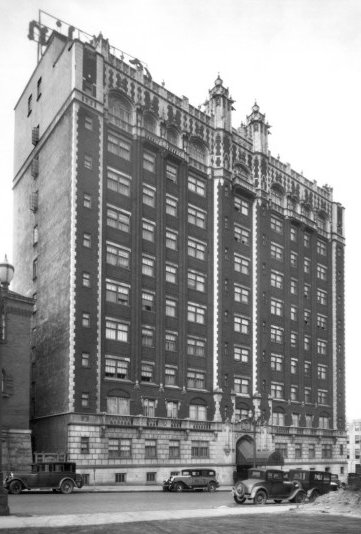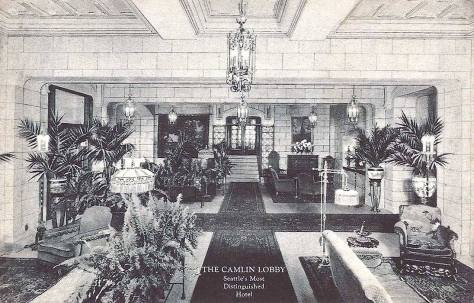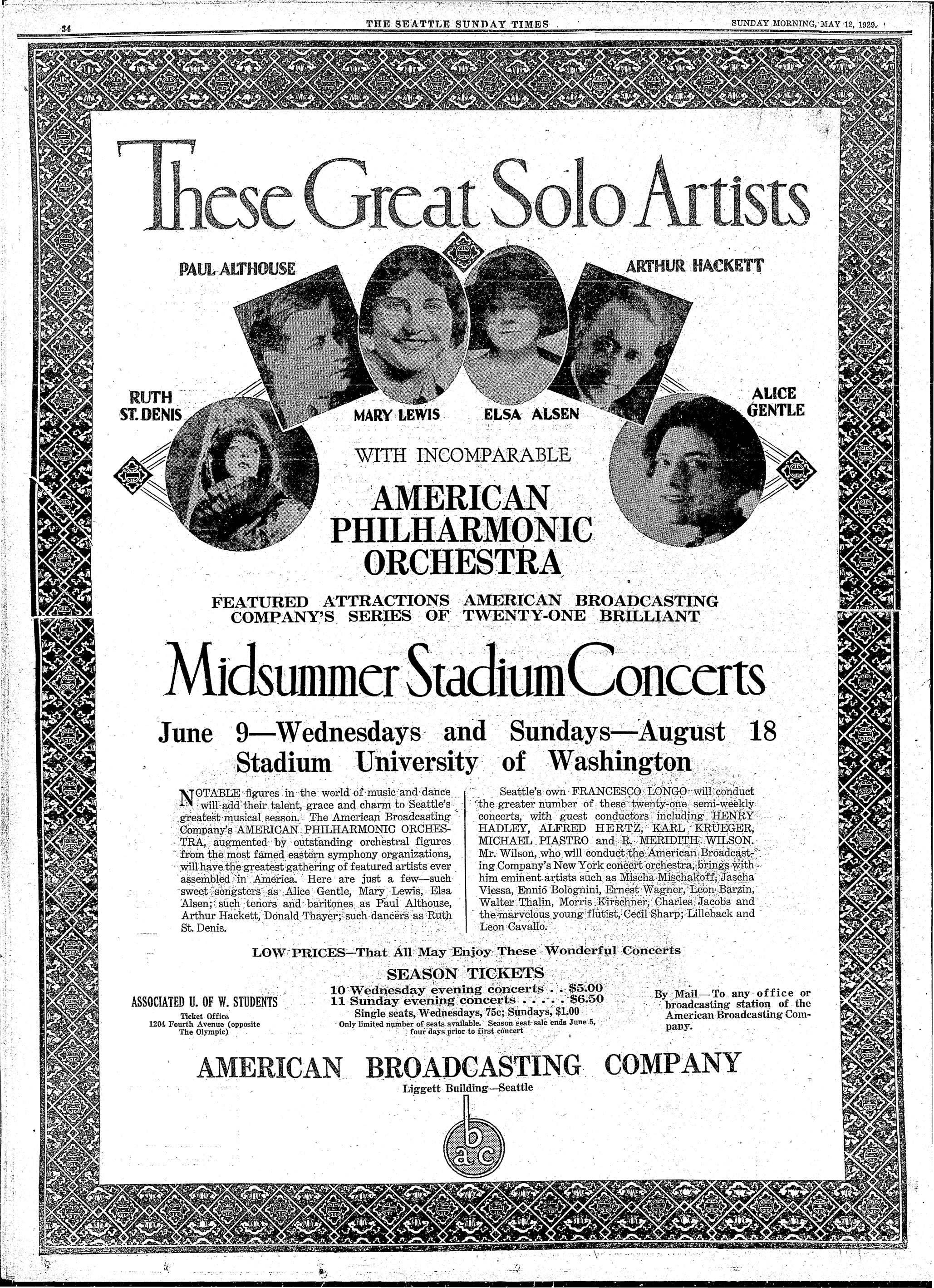America's history through the lens of 20th century broadcast media
Copyright 2020 Greenstone Media Consulting, LLC
American Broadcasting Company - Seattle - 1929
Racing toward the Cliff
Camlin lobby and exterior (right)
Coming from a modest family
background, Adolph Linden found
success in no small measure through his marriage to Esther Elizabeth Anderson,
daughter of the president of Puget Sound Savings and Loan for which Linden
worked. Upon his father-in-law’s death in 1923, Linden became president of the
bank and was fully enjoying the fruits of financial and social prominence.
In 1923, while still a vice-president of the bank,
Linden formed a partnership with another of the
bank’s vice-presidents, Edmund W. Campbell and in
1925, they created the Camlin Investment Group and
decided to pursue construction of the Camlin. With
both men in significant control of the bank, they
apparently jointly began using bank funds for the
Camlin’s construction. The group, whose name was a
contraction of their two last names, produced an
elegant residential hotel in downtown Seattle and the
majestic Camlin remains a Seattle landmark. The
decision to
use funds
from the bank
in that way,
however, is revealing both in terms of the
judgments involved as well as the path on
which it set Linden who later observed
that using Puget Sound Savings and Loan
funds for the Camlin was the biggest
mistake of his life.
One of Linden’s attorneys later observed that Linden was really more an artist than
a business man which could help explain both Linden’s approach toward the
Camlin’s construction as well as his other decisions in 1929.
With ABC, Linden was already painting on a much broader canvas than had
previously been the case. The Camlin was a Seattle property and had no
relationship to other hotel properties. While ABC’s four radio stations were
geographically distributed, they were, nevertheless, a joint regional undertaking.
It was the American Broadcasting Company – under Linden’s ownership – that
sought to expand to nationally significant proportions (and achieved some success
in that goal). But those ventures were not Linden’s sole exercises in further
spreading his wings.
Notwithstanding ABC's operating at a significant loss, 1929 found Linden pursuing in
a host of new undertakings which included negotiating for an airplane to fly
between Tokyo and Seattle as a publicity venture (he had already chosen his
pilot). He was also pursuing going into the production of motion pictures (talkies!)
and had taken an option on property for a soundstage and flown in experts from
New York and Hollywood to consult on facility design. In an effort to promote the
sale of the ABC stock, which was for the first time offered to the public in June,
1929, he purchased Seattle’s Business Chronicle, a local financial news publication.
And, in addition to working on developing a newspaper content syndication
business, he was also exploring a radio program production partnership business
with Radio Productions, Inc., a New York based corporation.
With the meteoric growth of ABC’s business scope in program in 1929, Linden’s
attentions to these other arenas for his vision, energy and financial resources were
obviously misplaced.
And then there were the concerts.
In May, 1929 Linden announced a Midsummer Stadium Concerts series to be held at
the University of Washington. A 20-event program was announced (it was
ultimately unclear whether there were 20 or 21 events actually presented)
featuring the 70-piece American Broadcasting Company Orchestra accompanying a
variety of largely imported artists. To be held at the UW’s Husky Stadium (with a
capacity of 30,000), the series had major soloists imported from New York and San
Francisco. The Wednesday and Sunday concerts scheduled every week beginning
June 9, offered series subscription prices with single seat admission of $1 for
Sunday concerts (the equivalent of about $15 in 2020) and 75 cents for Wednesday
events.
To promote ticket sales about
which he must have been
somewhat worried after
having signed the various
artists, Linden launched kind of
a contest which was open to
“civic, fraternal, business,
musical, charity or benefit
organizations, clubs, societies
or organizations of established
standing in Seattle or
Washington” to compete for a
prize of $1,500 for the entity
that sold the most tickets.
With artists including Marian
Anderson (2 performances),
the Chicago Grand Opera’s
Mina Hager, the Metropolitan
Opera’s Paul Althouse and
Arthur Hackett, conductors included ABC’s own Francesco Longo, Meredith Willson
(who Linden had lured to ABC from New York) and Mishel Piastro (then the
assistant conductor of the San Francisco Symphony). Where FREE summer concerts
in New York’s Central Park the often produced audiences of 20,000 in a city of
nearly 7 million, Linden’s 3-month long extravaganza sought to pay the sizable bills
for these concerts from ticket sales in a city of 360,000. The series’ most
successful concert drew an audience of 20,000 and Husky Stadium’s must have had
nights in which the vast majority of seat were empty – especially when the
weather wasn’t cooperative.
While it was subsequently suggested that adverse weather significantly contributed
to both the concert series’ losses and ABC’s subsequent financial ruin, one has to
wonder at the grandiosity that suggested to Linden that this series was a gamble
worth taking when ABC was already so significantly treading water. On its face,
the concert series seemed at best unlikely to breakeven.
But Linden had grand vision, had been emboldened by his successes to that date
and seemingly inured to the possibility of failure.


.png)


